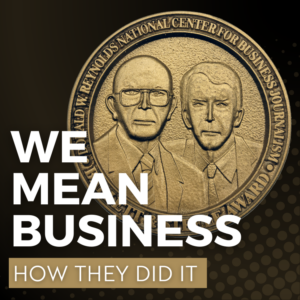In a world still talking about income inequality, high CEO compensation can be a touchy point with consumers, politicians, and shareholders. And there are skyrocketing examples that hit the media on a regular basis.
But executive pay can be more complicated. Here are a few points to keep in mind.
Not all executive pay seems stratospheric
When stories run about CEO pay, there are two ways you’ll see it mentioned. One is as a straight number (which can be much more difficult to unravel than you think, but more on that in a minute). The other is as a Dodd-Frank legislation-mandated ratio between the CEO’s annual compensation and the median pay of employees at the company.
A good way to explore the latter is with Bloomberg’s CEO pay ratio tool. You can look at either CEO pay ratios or median employee compensation. Choose all companies or pick between the Russell 1000 and S&P 500.
All the pay is sorted by industry, which makes a lot of sense. Trying to compare a tech company with an energy utility or retail chain can be confusing.
Remember that the ratio depends not only on the numerator of the specific CEO’s pay, but also on the median pay denominator. A big tech company may have a tiny ratio because the overall salaries are high and a CEO founder may take no salary because of the amount of stock and wealth he or she already has.
Similarly, a ratio may be high in an area like retail because so many of the workers are part-time or possibly working overseas where they make lower salaries than in the U.S. (However, always remember to probe whether the workers are part-time on their insistence or that of a company not wishing to add workers to its healthcare insurance roles, which would drive up compensation.)
The actual pay can be a slippery number
The actual compensation numbers for the CEO of a publicly-held company are in its annual proxy statement. Just a slight problem. According to governance and compensation experts I’ve spoken with, the numbers don’t necessarily reflect what the CEOs are actually paid.
The proxy statement has a section devoted to executive compensation and lists named executive officers. Listed for each are base salary, bonus, stock awards, and other compensation. But these may not be what they seem. For example, stock awards are usually in the form of restricted stock grants. The amount listed will be the target amount.
However, there is usually some kind of mechanism so that if performance falls below a certain level there is no award. Similarly, if it exceeds a particular amount (maybe the 75% point of a group of comparative companies), the stock earnings might double. It takes digging through footnotes in proxy statements to find how much the awards were.
Also, the other compensation can be substantial. Facebook CEO Mark Zuckerberg technically only gets $1 salary and no stock. As he already has a majority voting share, he doesn’t really need it.
But to say that he only makes $1 a year would be wrong. Last year, Facebook paid him $8.9 million for home security, personal security while traveling, and personal use of chartered private aircraft.
This works out to a CEO pay ratio of 37 to 1, which significantly understates how much Zuckerberg actually makes on the value of the almost 393 million shares of Class B stock (providing voting control) that he owns.
There are other areas, like retirement benefits and health coverage, where a CEO can make a lot more than it appears.











